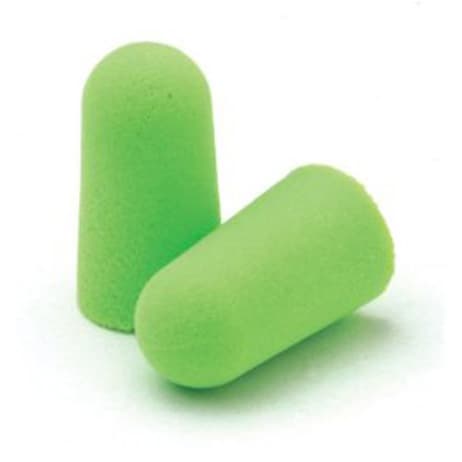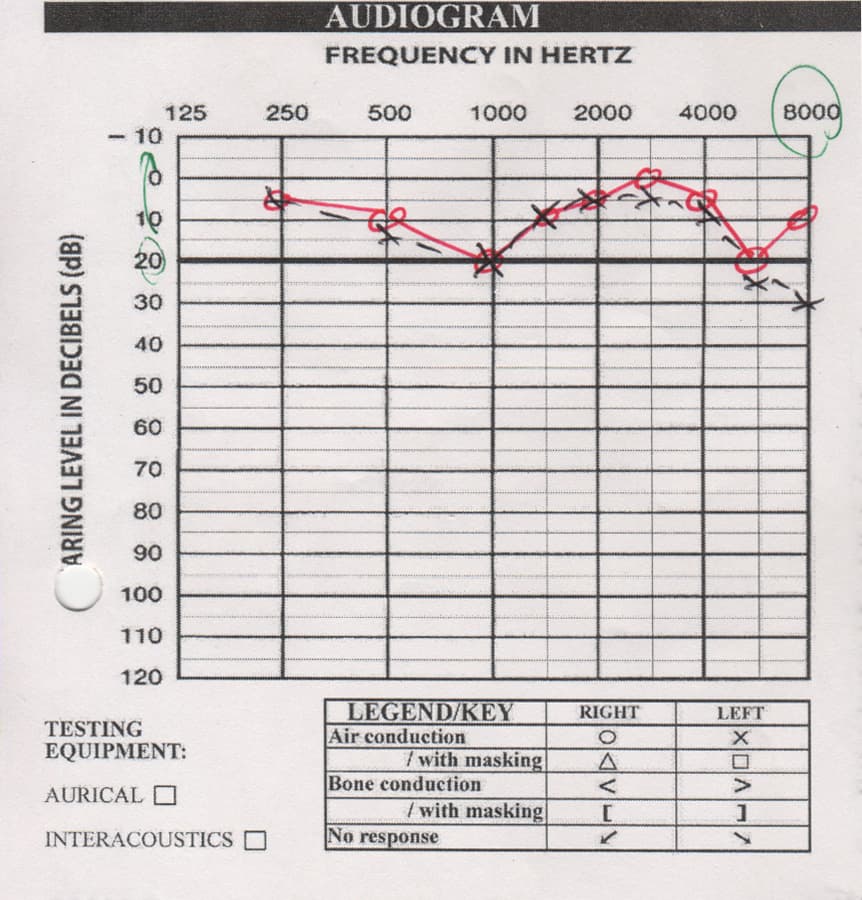
On The Bench: Hello? Can anyone hear me?
Text: Rob Squire
Sitting down to write this article I’ve taken myself away from the work bench and instead planted myself front and centre in my listening room. Slipping on the CD of a local band I picked up last weekend – one track after another throbbing through the Tannoys – I’m reminded of the reason I’m in this pro audio caper. It’s the music; it’s always been about the music.
While I typically spend all day working on audio equipment: repairing, refurbishing and modifying gear, there’s always one piece of equipment that seems beyond analysis and yet is without doubt the most important piece of gear any of us will ever own – our ears… or more accurately, our hearing, where the ears and brain combine to create one amazing instrument.
THE HUMAN EAR
The ear is a remarkable piece of engineering and accomplishes a large number of functions within the small space of a dozen or so cubic centimetres. The ear contains a resonating chamber, an impedance transformer, a mechanical amplifier, a mechanical-to-electrical energy converter, a spectral analyser, and if that’s not enough, a system to maintain hydraulic balance. The outer and middle ear is the impedance transformer, converting sound energy from the low impedance of the air to the high impedance of the fluid in the cochlea. The auditory canal of the outer ear also forms a resonant tube, which can double the sound pressure over the frequencies of 2 to 5kHz. It’s over this band of frequencies that our hearing is most sensitive and it’s no coincidence that it’s also the most important band for speech intelligibility. Airborne sound then reaches the eardrum where it is converted into mechanical vibration. The eardrum passes this vibration onto the three small bones of the middle ear: the hammer, anvil and stirrup – collectively known as ‘the ossicles’. These form a lever system that can potentially triple the vibrational force. This force is then transmitted to the oval window of the fluid-filled cochlea. The size of the eardrum is 15 to 30 times that of the cochlea’s oval window and represents further impedance matching, this time between the mechanical vibrations of the ossicles and the fluid contained within the cochlea. This also yields a potential 30-fold increase in amplification, resulting in a total amplification factor in the ear of up to 180 between a sound wave entering the outer ear and the hydraulic pressure in the fluid of the cochlea or inner ear. Impressive stuff…
This amplification within the ear may seem surprising, given the huge amount of power invested in large concert PAs, but consider the other end of the volume scale. The threshold of hearing at 1kHz corresponds to a change in air pressure of around one billionth of one atmosphere! Back in front of our loud concert PA with the sound reaching painful levels, the pressure changes can be a billion times greater than that at the threshold of hearing. Thus, the dynamic range of our hearing, from the threshold of perception to a point of pain, is enormous. Some high-frequency sounds that move the eardrum less than the diameter of a hydrogen molecule are still audible thanks to this extraordinary mechanism.
UNDER PRESSURE
It is within the cochlea that the remarkable task of converting minuscule changes of pressure into the perception of sound takes place. These hydraulic pressure changes caused by mechanical motion of the stirrup against the oval window, flow through the vestibular and tympanic canals and around the cochlear duct, reaching the basilar membrane where the organ of Corti is stimulated. It is the hair cells of this organ – through a shearing action – that convert hydraulic pressure into electrochemical nerve impulses. The basilar membrane is taut and light at the end nearest the oval window, and looser and thicker further away. This is the system by which our sense of frequency discrimination is perceived. As a particular frequency sound wave moves along the basilar membrane its amplitude increases until it reaches a maximum, after which the amplitude falls off sharply. The point at which this amplitude maximum occurs is used to determine the frequency of the sound.
LOUDNESS CURVES
Our perception of the loudness of different frequencies is also very dependent on the actual loudness. Research by Fletcher and Munson in 1937 yielded a set of curves that have since been refined and are generally now known as the ‘equal loudness contours’ – these days they’re considered an ISO standard. It is against this standard that threshold audiometric hearing tests are performed. Generally the curves demonstrate the significant lowering of perceived loudness at low and extremely high frequencies, and conversely, the increased sensitivity in the 2 to 5kHz region. The other aspect clearly demonstrated by these curves is that our hearing is not ‘flat’; that it is not until sound becomes very loud that our perception of the loudness of different frequencies over our range of hearing even approaches a degree of equality.
Neither does our perception of loudness scale linearly with respect to actual sound intensity. A 3dB increase represents a doubling of sound intensity and yet we actually require a 10dB increase in intensity for it to be perceived as a doubling of loudness; although this is a broad generalisation as perception of loudness changes are very dependent on the actual spectral content of the sound and the overall level. Recommendations or indeed workplace regulations on noise exposure are dose related; meaning that the maximum allowed exposure is a function of noise intensity over time. While Australian OH&S regulations allow for an exposure of 85dBA over an eight-hour period, the exposure period is halved for every 3dB increase above 85dBA. Due to the nature of our perception of loudness, it is very easy to be fooled into not realising the extent of loudness increases and thus be quickly exposed to a situation where damage can occur. A loud concert for instance can easily reach levels of 100dBA. At this level OH&S guidelines tell us that the exposure time should not exceed 15 minutes… which means we really should be walking out of gigs after three songs regardless of how well the gig is going.
DID ANYONE HEAR THAT?
Human exposure to noise has changed dramatically over the last couple of hundred years and certainly as a primitive people there were advantages to being able to hear the quietest of sounds. Detecting the sounds of prey or predators in the distance was of distinct benefit for obvious reasons. But the human ear has its limits and evolution has effectively put a threshold (or noise gate if you will) across our hearing to prevent us from hearing the tiniest of sounds, lest we go mad with continuous background noise from the random vibration of air particles and the scurrying of millipedes. This mechanism is produced by the intrinsic stiffness of the hearing system.
Our hearing also has a built-in protection system to minimise damage when we encounter loud sounds. At around 85dB two sets of muscles are triggered. The Tensor muscle tightens the eardrum, restricting its ability to vibrate, while the Stapedial muscle pulls the stirrup away from its link to the oval window. This protective system is relatively slow to act however (soft-kneed), taking up to 150 milliseconds for levels just above the 85dB threshold, although this response time quickens as sound pressure levels increase, shortening to 30 milliseconds for very loud sounds. Considering how much of the loud noise we experience in the modern world is very transient in nature and persists for only very brief time intervals – ie. snare drums, hammer strikes – this mechanism cannot be relied upon to prevent damage to our hearing. Adding to our susceptibility to hearing damage from loud sounds, our perception of loudness is dependent on the persistence of the sound. Once a sound lasts up to 200ms its perceived loudness doesn’t change. However, perceived loudness is inversely proportional to its length of persistence below 200ms, falling to a 20dB lower perceived level for sounds lasting only a few milliseconds. Curiously, a longer sustained sound will desensitise our hearing, rendering following sounds of the same loudness to being perceived as quieter.
A loud concert can easily reach levels of 100dBA. At this level OH&S guidelines tell us that the exposure time should not exceed 15 minutes… which means we really should be walking out of gigs after three songs regardless of how well the gig is going
PITCH UNMASKED
Of course, hearing involves more than just the mechanics of the ear and in the perception of sound the other significant part of the equation is the brain.
For a musician, one important but little known aspect is the effect of loudness on pitch perception. At high pitches, above around 2kHz, pitch is perceived to increase (sharpen) as the loudness increases. Below 2kHz, however, pitch is perceived to decrease (flatten) as loudness increases. Since the fundamentals of most musical instruments lie below 2kHz, generally speaking there’s a perceived flattening of pitch as a sound increases in volume. This perceptual change is not insignificant either, with tests indicating a 20-cent (one fifth of a semitone) flattening in pitch perception as loudness increases from 60 to 90dBA. Certainly for singers working with headphones, the volume of the headphones can have a marked impact on their ability to sing in tune.
Even our ability to perceive tones at all is highly dependent on the overall spectral content we’re exposed to. ‘Masking’, as it’s known, is the phenomenon by which some frequencies are rendered imperceptible in the presence of others. A louder tone will mask the presence of close but higher frequencies and to a lesser extent close but lower frequencies that occur simultaneously. Indeed loud sounds can mask the presence of softer sounds that occur up to half a second after the loud sound ends. This psychoacoustic effect is exploited in digital audio compression technologies such as mp3 and AAC encoding where up to 90% of the audio information can be ‘thrown away’ as it’s considered imperceptible in the presence of the louder frequencies.
HEARING DAMAGE
“The real reason I haven’t performed live for a long time is that I have very severe hearing damage. It’s manifested itself as tinnitus – ringing in the ears at the frequencies that I play the guitar.” – Pete Townshend.
Exposure to loud noise causes both short-term hearing loss through an increase in the threshold of hearing from which recovery can occur over a period of hours or days, and long term or permanent damage. This hearing loss is due to physical damage to the hair cells in the organ of Corti and in permanent hearing loss, the hair cells are broken or flattened. Since different hair cells are involved in the perception of different frequencies, hearing loss of this type is always exhibited as a shift in the threshold of perception at specific frequencies or bands of frequencies. Just as the resonance of the ear canal creates an increased sensitivity to frequencies around 2 to 5kHz, it also increases the susceptibility of hearing loss in this range. There is a certain irony here in that the evolution of human hearing, which has lead to an increased acuity at frequencies critical to understanding speech, also disposes us to an increased likelihood of hearing loss in this important frequency band.
Hearing loss is also inevitable. As we age a loss of high-frequency acuity occurs, more so in men than women. However, the extent and type of hearing loss that is actually found in modern populations is much more to do with damage from a lifetime of noise exposure than simple aging.
A quick hearing test by an audiologist will reveal threshold shift at the typical frequencies tested at octave spacings from 250Hz to 8kHz and certainly provides an indication of hearing damage. Hearing tests are rarely done at higher resolutions than one octave points, so they don’t provide a lot of detail about the real peaks and dips that can occur in hearing loss. Similarly, standard hearing tests only look at the threshold of hearing so they don’t provide any information either about perceived loudness of different frequencies once they exceed the threshold of hearing. Indeed, there’s a phenomenon amongst many people with hearing loss called ‘loudness recruitment’ in which sounds at higher levels are perceived to be just as loud or even louder than they would be for an unimpaired listener. This can perhaps go some way to explain how a person with significant hearing loss can have trouble interpreting speech due to the imperceptibility of critical frequencies at typical speech levels but can still appreciate a fuller bandwidth in louder music. Quite simply we can’t run a frequency sweep over our hearing and plot its response like we can a piece of electronic audio equipment. Hearing frequency response is not only subjective, it’s also loudness dependent, affected by the complexity of the sound, the sound’s persistence, and not least on how loud the sound actually is.
The University of NSW provides an interactive web page that, while not yielding a true audiogram or hearing test, is certainly instructive to play around with. It not only gives you a feel for just how difficult it is to subjectively assess the loudness of different frequencies, it also provides some sort of guide about the state of one’s hearing response: www.phys.unsw.edu.au/jw/hearing.html



ROTATING PLAYERS OFF THE BENCH
Professional symphony orchestras are today taking the issue of hearing protection and the potential for hearing damage very seriously. Every new member to the orchestra is given information on hearing protection and disposable foam earplugs are always provided. New members are also informed about – and encouraged to use – custom molded in-ear attenuator plugs. Education of these new members about auditory health and safety is taken very seriously, and protection from hearing loss is a significant part of the induction process. Hearing tests are performed every two years on all orchestra members as a means of tracking any potential degradation that might be occurring, and this also provides the opportunity to take action at the first sign of hearing loss. Further consideration is also given to different sections of the orchestra; in particular the use of sound screens around horn players, platforms to elevate players and their instruments over the heads of other sections in front, and even the rotation of players over several nights when a series of performances of a particularly loud piece is taking place.
This consideration of exposure levels is also venue dependent, especially when orchestras are performing in the orchestra pit as they do for ballet and opera, where due to the enclosed nature of the pit, high volumes are often encountered. This issue is exacerbated and thus appropriately responded to at different venues with varying pit designs. Even the annual repertoire and the choice of players for concerts during the year is given due consideration to ensure that both the sound exposure and indeed the physical demands that can lead to injury is spread across orchestra members.
Of course wearing earplugs can be a compromise for musicians, particularly for those who play in an orchestra where the dynamic range is often so wide. It’s not uncommon these days for musicians to mark on their scores when they need to put earplugs in and then later take them out, sometimes wearing just one earplug to protect the ear facing another loud instrument or section.
LISTEN UP
Hearing loss is a significant social and health issue and some believe the increasing use of ear buds and headphones is likely to exacerbate the issue in the future. Despite the inevitability of some hearing loss with age, the acceleration of that loss and the extent to which it occurs at lower critical speech frequency bands should give everyone – particular if you use your ears to earn a living – pause to think. Most people will dash out to get their eyes tested at the first hint of loss of visual acuity but very few regularly have their hearing tested.
One aspect of hearing damage that doesn’t receive enough consideration is tinnitus. While there are many potential causes for tinnitus there is usually a strong correlation between hearing loss and tinnitus. Tinnitus is a very subjective experience and the extent of the problem can range from a mildly annoying occasional ringing to a perceived constant stream of noise that can lead to depression and other severe impacts on general health and well being. I’ve spoken to many people around my age – 50 if you must know – and almost without exception those who have had a long career in music, particularly in live sound, either mixing or playing, have some degree of tinnitus. I know I have, and the experience is insidious. While the impact of tinnitus on daily life can be variable, I’m very aware of its significant effects on simply listening to and appreciating music, as sounds decay away everything resolves into the constant high frequency noise that is my tinnitus. Silence is no longer golden, it is now somewhat tarnished.

















RESPONSES